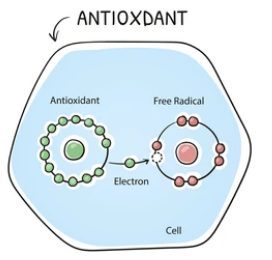In recent years, there has been a trend in the skincare industry towards “presenting facts and reasoning” ingredients. Blue copper peptides, which have been dormant in the industry for many years, have become active in the public eye, along with their popularity and raw material prices. Since its usability has been explored by many brands and netizens, blue copper peptides have also been referred to as “treasure ingredients”, which to some extent means literally: expensive
So how did the expensive blue copper peptide enter the mainstream of skincare? This is related to its efficacy value. Blue copper peptide focuses on anti-aging and repair, coupled with its mild ingredients and a wide range of skin types, hitting the pain points of sensitive muscles in everyone. Repairing, anti-aging, gentle, and each stronger than others, the blue copper peptide has gradually broken through and entered the forefront of skincare in the past two years.

When it comes to the function of blue copper peptide, it cannot be separated from its structural composition, tripeptide-1 (glycine L-histidine L-lysine) and copper ions. Tripeptide-1 itself exists in the human body, and as an indigenous of the body, it has the power to freely traverse the body and has the ability to improve tissue repair. But before encountering copper ions, tripeptide-1 was only one of the many offspring of peptides. But the good thing is that the amino acid sequence where tripeptide-1 is located has a strong affinity for copper, and when the two meet, they hit it off immediately.
After binding with tripeptide-1, copper ions can enter the cell, which is an essential factor in many enzymatic reaction processes. Tripeptide-1 provides an opportunity for copper ions to demonstrate their strength, while copper ions fully complement tripeptide-1’s unique carrying capacity. The two fight together to become the darling of the skincare world, a combination of 1+1>2.
In view of its remarkable contribution to skin repair (its efficacy was first discovered when studying wound repair), in addition to emphasizing anti-aging and light lines, it can play an extreme role in relieving and repairing sensitive muscles.
In the field of cosmetics, the application of blue copper peptide is mainly in the following aspects:
Promoting collagen and elastin regeneration: This is one of the most important anti-aging functions of blue copper peptide
Promoting wound healing: For damaged wounds, blue copper peptides promote fibroblast regeneration and have long been used in medicine
Anti inflammatory effect: Blue copper peptide can inhibit the synthesis of many inflammatory factors, which is beneficial for cell repair
Helping with DNA repair: Blue copper peptides can affect the synthesis of many genes (approximately 4000), and can have a repair function when DNA is damaged by ultraviolet radiation (in vitro experiments)
we take pride in our commitment to providing the highest quality blue copper peptide to our customers. Our dedication to research and product excellence ensures that you receive a product that meets the highest industry standards. Our team of experts is always on hand to assist you for your needs and answering any questions you may have, please contact us at info@biosynsis.com.









